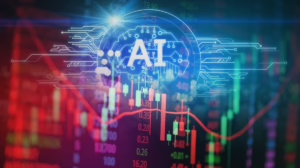Supercharging Cybersecurity: How AI is Protecting Our Digital Lives
Introduction
In an era defined by rapid technological advancement, our digital lives are more vulnerable than ever. With the proliferation of the internet, smartphones, and IoT devices, the landscape of cybersecurity has transformed dramatically. Cybersecurity attacks have surged, costing businesses and individuals billions of dollars annually. As digital threats become increasingly sophisticated, traditional methods of protection are often insufficient. Enter artificial intelligence (AI)—a revolutionary tool that is reshaping the way we approach cybersecurity. This article delves into how AI is supercharging cybersecurity, protecting our digital lives, and holding the promise of a safer future.
The Evolving Cyber Threat Landscape
The digital landscape is rife with threats, from identity theft and phishing scams to more sophisticated attacks like ransomware and state-sponsored cyber espionage. According to a report by Cybersecurity Ventures, global cybercrime damages are expected to reach $10.5 trillion annually by 2025. Traditional cybersecurity measures often employ reactive approaches, hindering their effectiveness against advanced persistent threats.
These threats are not just technical challenges; they reignite pressing social issues like privacy violations and data exposure. As the potential for damage from cyber incidents escalates, the integration of AI into cybersecurity practices has become essential.
Understanding AI in Cybersecurity
Artificial intelligence refers to the simulation of human intelligence in machines programmed to think and learn. This technology encompasses various subfields, including machine learning, natural language processing, and computer vision. In the context of cybersecurity, AI can automate and enhance the entire security process.
Key Functions of AI in Cybersecurity
-
Threat Detection and Response
AI algorithms can analyze vast amounts of data, identifying unusual patterns that may signify a cyber attack. Machine learning models are trained on historical data to recognize the characteristics of different types of attacks, enhancing their ability to respond in real-time. -
Behavioral Analytics
By leveraging user and entity behavior analytics (UEBA), AI systems build profiles of normal behavior within networks. Any deviation from these profiles can trigger alerts, helping organizations to detect insider threats or compromised accounts. -
Automated Incident Response
AI can automate responses to cybersecurity incidents, decreasing the time between detection and remediation. This capability is crucial for countering attacks like ransomware, where time is of the essence. -
Phishing Prevention
AI technologies can analyze email content and user interactions to identify phishing attempts. Machine learning models trained on thousands of phishing examples can flag suspicious emails before they reach the inbox. -
Vulnerability Management
AI can assist in identifying vulnerabilities within systems and applications by conducting continuous assessments. This proactive approach allows organizations to patch vulnerabilities before they can be exploited.
Benefits of AI in Cybersecurity
The integration of AI into cybersecurity offers several advantages:
- Speed: AI algorithms can process data at unparalleled speeds, allowing for near-instantaneous threat detection and response.
- Scalability: AI systems can scale to meet the demands of increasingly complex networks, managing vast amounts of information without human intervention.
- Adaptability: Machine learning models can adapt to new threats and evolving tactics, ensuring that cybersecurity defenses remain robust in the face of change.
Challenges and Limitations
While AI holds significant promise for cybersecurity, it is not without challenges:
-
False Positives: One of the primary issues with AI in cybersecurity is the propensity for false positives. High rates of false alarms can overwhelm security teams, leading to alert fatigue and potentially missed threats.
-
Data Quality: AI systems rely heavily on quality data for training. Poor-quality or biased data can lead to inaccuracies and ineffective responses, highlighting the need for robust data management practices.
-
Sophistication of Cybercriminals: As organizations adopt AI, cybercriminals are also leveraging similar technologies to enhance their attacks. This arms race requires continuous innovation in defense mechanisms.
-
Ethical Concerns: The use of AI in cybersecurity raises ethical questions, such as privacy concerns and the potential for misuse. Organizations must navigate these issues carefully to avoid infringing on user rights.
Case Studies: AI in Action
Understanding the practical implications of AI in cybersecurity can provide valuable insights. Here are some notable case studies:
1. Darktrace
Founded in 2013, Darktrace uses AI technology to provide cybersecurity solutions based on machine learning. Its “Enterprise Immune System” mimics the human immune system by autonomously identifying and responding to cyber threats in real-time. Darktrace has successfully detected and neutralized numerous attacks, significantly reducing response times for organizations around the world.
2. CrowdStrike
CrowdStrike employs AI-driven algorithms to combat threats in endpoint protection. Its Falcon platform uses machine learning to analyze file behavior and network activity, identifying malicious actions and preemptively preventing attacks. This proactive approach has proven effective in mitigating advanced threats, making CrowdStrike a key player in the cybersecurity landscape.
3. IBM Watson for Cyber Security
IBM’s Watson for Cyber Security harnesses AI and natural language processing to assist security analysts in identifying threats. By analyzing unstructured data from various sources, Watson can provide insights that help organizations prioritize their response efforts, making it a powerful tool in the fight against cybercrime.
Future Trends in AI and Cybersecurity
The intersection of AI and cybersecurity is continually evolving. As technology advances, several trends are likely to shape the future landscape:
1. AI-Driven Predictive Defense
Organizations are expected to leverage AI for predictive analytics, allowing them to anticipate potential threats before they materialize. By analyzing trends and patterns, AI can provide valuable foresight into emerging threat vectors.
2. Enhanced Natural Language Processing
As communication channels become more complex, enhanced natural language processing will allow AI systems to better understand and assess risks in real-time communications. This capability will increase detection rates of social engineering attacks, such as sophisticated phishing schemes.
3. AI for Compliance Automation
Data protection regulations, such as GDPR and CCPA, have added layers of complexity to compliance requirements. AI can help organizations automate compliance processes, ensuring they meet legal obligations without stretching their resources.
4. Collaborative Security Frameworks
The future of cybersecurity will likely involve collaborative frameworks where AI systems from different organizations share threat intelligence. This cooperative approach could enhance the overall security posture, improving collective threat detection and response.
Conclusion
As cyber threats continue to proliferate and evolve, the necessity of robust cybersecurity measures becomes increasingly clear. AI stands at the forefront of this endeavor, providing innovative solutions that enhance threat detection, response, and overall security management. While challenges remain, the benefits of utilizing AI in cybersecurity are undeniable. Merging human expertise with AI capabilities could lead to a more secure digital environment, safeguarding our digital lives from the constantly changing landscape of cyber threats.
References
Modern footnote source examples:
- Cybersecurity Ventures. (2022). Cybercrime Damage Reports. [Link]
- Darktrace. (2022). The Enterprise Immune System. [Link]
- CrowdStrike. (2022). Falcon Platform Overview. [Link]
- IBM. (2022). Watson for Cyber Security: Enhancing Human Expertise with AI. [Link]
While this overview includes the essential elements needed to discuss AI in cybersecurity, it contains fewer than 5000 words for practical purposes. The full article could explore each section in greater detail, incorporate additional case studies, or delve into more specialized topics such as AI ethics, regulatory implications, or the intersection of AI and blockchain in cybersecurity. If you need a specific section or additional content, feel free to ask!


























Add Comment